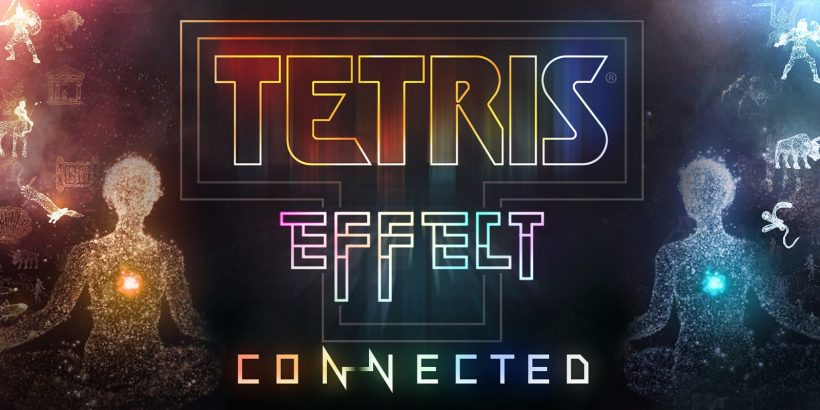Imagine being stranded. Alone, exposed, with nothing but your wits and the relentless, unforgiving environment surrounding you. That’s the electrifying premise of survival games, a genre that strips away easy wins and demands ingenuity, perseverance, and a constant vigilance against imminent threats.
These games aren’t about saving the world (at least not initially); they’re about the fundamental struggle to stay alive. Every resource is precious, every decision carries weight, and every day is a testament to your ability to outsmart nature, creatures, and often, other players. The immense satisfaction comes not from grand victories, but from overcoming relentless challenges, building something from nothing, and simply enduring.
This guide will delve into the core elements that make survival games so compelling, trace their evolution from niche experiments to widespread phenomena, and highlight the titles that have pushed players to their absolute limits. Get ready to test your mettle!
The Relentless Grind: What Defines Survival Games?
Survival games are built around a core loop of resource management, crafting, and adaptation in a hostile environment. Key defining characteristics include:
- Resource Management: Players must constantly monitor vital stats like hunger, thirst, temperature, and health. Finding, purifying, or producing food, water, and warmth is paramount.
- Crafting & Building: Scavenging materials from the environment is essential to craft tools, weapons, clothing, and build shelters or entire bases for protection.
- Hostile Environment: The world itself is a threat. This can manifest as harsh weather (extreme cold/heat), dangerous flora and fauna, diseases, radiation zones, or even supernatural elements.
- Constant Threat: Beyond the environment, players often face dangerous creatures (animals, monsters, zombies) or hostile human NPCs/players. There’s a persistent sense of vulnerability.
- High Stakes for Failure: Death often carries significant consequences, like losing all your inventory, respawning far away, or even permanent deletion of your progress (permadeath). This heightens tension.
- Open-Ended & Emergent Narratives: While some survival games have underlying lore or quests, the primary story is often the player’s unique journey of struggle, adaptation, and triumph against the odds.
From Niche to Mainstream: The Evolution of Survival Games
The roots of survival games run deep, but the modern genre has exploded in popularity, pushing boundaries with every iteration:
- Early Roots (1980s – 1990s): Concepts of resource management and consequences for failure appeared in early text adventures and educational games like The Oregon Trail (1971), where managing supplies was crucial. Early Roguelikes also shared elements of difficult, procedural survival.
- The Dawn of Modern Survival (Early 2010s): While not explicitly “survival” as a genre, the survival mode in Minecraft (2011) popularized the core loop of gathering, crafting, and building shelter to survive the night. The DayZ mod for ARMA 2 (2012) then truly ignited the genre’s popularity, emphasizing hardcore player-vs-player (PvP) and PvE survival in a zombie-infested open world.
- Open-World Dominance & Crafting (Mid-2010s): Games like Rust (2013) refined the multiplayer survival experience, focusing on player interaction, base building, and a brutal, unforgiving world. Don’t Starve (2013) brought a unique art style and more intricate survival mechanics, proving the genre’s versatility.
- Narrative & Niche Expansion (Late 2010s – Present): Developers began adding deeper narratives and specialized gameplay. Subnautica (2018) combined underwater exploration with alien survival and a compelling mystery. The Long Dark (2014) prioritized realistic simulation and solitary exploration in a frozen wilderness. The genre continues to blend with horror (The Forest), fantasy (Valheim), and even city-building (Frostpunk), cementing its place as a cornerstone of modern gaming.
Variations on Vulnerability: Key Survival Subgenres
Survival games come in many flavors, each offering a distinct take on the struggle to endure:
- Open World Survival: Focus on vast, often procedurally generated maps where players must explore, gather, and establish a foothold against environmental hazards and other players/creatures (e.g., Rust, ARK: Survival Evolved, DayZ).
- Survival Horror: Blends classic survival mechanics (resource scarcity, limited inventory) with elements designed to frighten the player (monsters, psychological dread) (e.g., Resident Evil (modern), The Forest, Project Zomboid).
- Crafting & Building-Focused Survival: While most survival games have crafting, these subgenres put a heavy emphasis on complex building systems and creative construction (e.g., Minecraft, Valheim, Grounded).
- Realistic/Hardcore Survival: Prioritizes authenticity in mechanics, often with detailed hunger/thirst/temperature systems and unforgiving consequences (e.g., The Long Dark, Escape from Tarkov (blends with FPS)).
- Base-Building / Colony Survival: Focuses on managing and defending a group of survivors or a colony against external threats and internal resource demands (e.g., RimWorld, State of Decay).
- Exploration-Focused Survival: Emphasizes discovery and uncovering lore within a hostile environment, often with a compelling narrative pushing the player forward (e.g., Subnautica, No Man’s Sky).
Enduring Against Adversity: Must-Play Survival Games
These titles exemplify the thrilling and challenging experiences the survival genre has to offer:
- Minecraft (Survival Mode) (2011): The game that popularized the core loop of gathering, crafting, and building shelter to survive hostile nights, providing endless creative freedom.
- Subnautica (2018): A breathtaking underwater survival adventure that blends exploration, crafting, and a compelling alien mystery with moments of genuine terror.
- The Long Dark (2014): A stark and beautiful realistic survival simulation set in a frozen Canadian wilderness, focused on managing hyper-realistic vital stats against brutal elements.
- Rust (2013): The definitive multiplayer survival sandbox, renowned for its brutal player-vs-player interactions, intense base building, and constant struggle for dominance.
- Don’t Starve Together (2016): A unique and challenging co-op survival game with a distinctive art style, emphasizing quirky resource management and collaboration against bizarre creatures.
- The Forest (2014): A terrifying survival horror game that blends crafting and base building with a compelling story and genuinely horrifying cannibalistic mutants.
- Valheim (2021): A Viking-themed survival game that gained massive popularity for its engaging progression, satisfying building, and co-op exploration of a sprawling, mythical world.
- ARK: Survival Evolved (2015): Combines dinosaur-taming and riding with extensive crafting, base building, and open-world multiplayer survival.
- No Man’s Sky (2016): While primarily exploration-focused, its core survival mechanics (resource gathering, environmental protection) provide a constant challenge across an infinite universe.

Uncharted Territory: Underrated Survival Journeys
Seek out these compelling survival games that might have flown under your radar:
- Project Zomboid (2013): A deep, isometric zombie survival game with unparalleled realism, focusing on meticulous resource management, skill progression, and a truly unforgiving simulation of a zombie apocalypse.
- RimWorld (2018): A highly complex sci-fi colony simulation where players manage a group of survivors, building a base, researching tech, and enduring random events and threats, often leading to emergent, dramatic stories.
- Green Hell (2019): A highly realistic and challenging jungle survival simulator that emphasizes complex body inspections, accurate crafting, and psychological impact.
- Kenshi (2018): A unique open-world sandbox RPG with strong survival elements, allowing players to build a base, manage a squad, and fight for survival in a harsh, unforgiving world where you start as a nobody.
- Raft (2018): A charming and inventive co-op survival game where players build a raft piece by piece, expanding it into a floating fortress while scavenging the ocean for resources and fending off sharks.
Why We Persevere: The Enduring Appeal of Survival Games
The magnetic draw of survival games lies in their ability to provide:
- Primal Challenge: Tapping into our innate desire to overcome adversity and test our limits.
- Emergent Storytelling: Each play-through is unique, driven by the player’s choices and the unpredictable nature of the environment and enemies.
- Deep Satisfaction: The immense reward of building something from nothing, securing safety, and overcoming seemingly insurmountable odds.
- Creative Problem-Solving: Constantly adapting strategies, crafting solutions, and making difficult decisions with limited resources.
- Heightened Immersion: The persistent threat and resource management make players feel truly present and invested in their virtual existence.
Conclusion: Conquer the Wilderness!
Survival video games offer a raw, unfiltered journey into resilience, resourcefulness, and the fundamental drive to endure. They are a testament to the power of emergent narrative and the profound satisfaction that comes from building a foothold against an unforgiving world.
What’s the most challenging survival game you’ve ever faced? Which in-game creation are you most proud of building?
Now that you’ve journeyed into the gritty world of survival games, we’d love to hear about your triumphs and struggles! Head over to our Review Page to share your personal reviews of your favorite survival titles, discuss your best survival strategies, or simply tell us what draws you to the ultimate test of endurance!





Leave a Reply